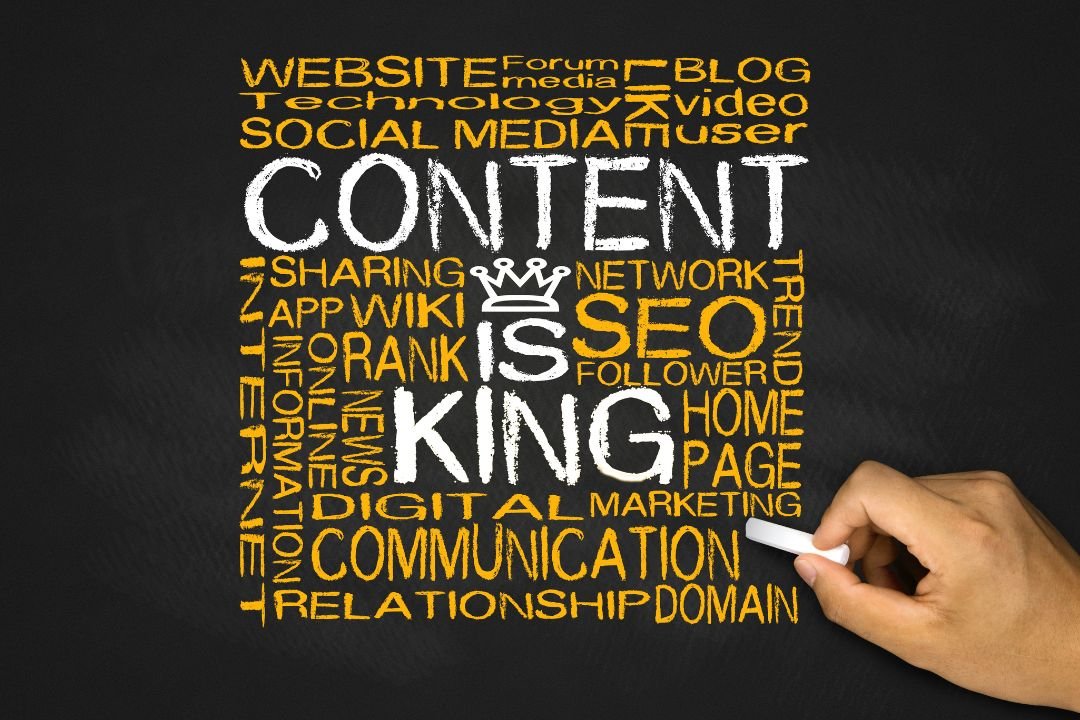Content
There are a lot of websites out there. Meaning that there is a lot of distractions and people are picky about the information that they consume. That’s why it’s important to be intentional and direct with the content that you use on your website. Your visitor has to see, read, hear or engage with something that they need that they are not able to get anywhere else.
Building Content
Content is everything from the words that you place on your website to the images, videos or audio. When someone comes to your website they will be drawn to it by your images and video however the written content is what will make them stay. Although looking good is important to get the attention of your visitor it is the content that will convert them into a customer.
Step 1: Know Your Audience (Research)
Use tools like Google Trends, AnswerThePublic, or Reddit/Quora to identify what your audience is searching for.
Create buyer personas to keep your messaging targeted.
✅ Why?
If your content doesn’t speak directly to your ideal customer, it won’t resonate—or convert.
Step 2: Conduct Competitor and Keyword Research
Analyze competitors’ websites to see what content ranks and converts well.
Use tools like Ubersuggest, SEMrush, or Ahrefs to identify keywords that bring traffic.
Focus on long-tail keywords and search intent (e.g., “best sunscreen for sensitive skin”).
✅ Why?
Knowing what already works helps you outperform the competition with deeper, better content.
Step 3: Plan a Content Strategy and Funnel
A well-crafted content strategy isn’t just about what to post—it’s about where your audience is in their journey. Whether it’s awareness, consideration, or decision, each piece of content should guide users closer to your end goal. Think of it as building a bridge from curiosity to conversion.
Outline content for each phase of the customer journey:
Awareness (blogs, social posts, guides)
Consideration (case studies, comparisons, explainer videos)
Decision (product pages, reviews, testimonials)
Use a content calendar to stay consistent.
✅ Why?
Content that matches where your customer is in their journey increases conversion rates.
Step 4: Create High-Quality, Value-Driven Content
Write informative, easy-to-scan articles with headings, bullet points, and visuals.
Use authentic voice, real-world examples, and calls-to-action (CTAs).
Include optimized images, short videos, or audio snippets.
✅ Why?
Clear, helpful content builds trust and authority. Multimedia increases engagement and time on site.
Step 5: Optimize for SEO & AI Search
Use proper heading structure (H1, H2, H3).
Add schema markup, meta titles, and descriptions.
Format FAQs for AI-powered search tools and voice assistants.
Keep content updated regularly.
✅ Why?
Search engines—and AI search tools—prioritize structured, relevant, and expert-level content.
Step 6: Track, Test, and Improve
Data is your feedback loop. Use analytics to see what’s working and what’s not, then tweak, test, and level up your content. Content creation isn’t a one-and-done—it’s an ongoing process of refinement that turns good into great.
Use Google Analytics and heatmaps to see how users interact with your content.
Test headlines, CTAs, and images.
Repurpose popular content into other formats like video, infographics, or email campaigns.
✅ Why?
Improving based on real data ensures your content stays relevant and performs better over time.
5 Supporting Resources (URL Links)
5 AI Tools to Help You Create High-Converting Content
https://surferseo.com
→ Helps optimize content structure and keywords to rank better.
Jasper AI
https://www.jasper.ai
→ AI writing assistant that helps craft blog posts, emails, and landing pages.
Copy.ai
https://www.copy.ai
→ Great for creating headlines, CTAs, product descriptions, and ads.
Frase.io
→ Researches top-ranking content and helps you build better outlines and answers.
ChatGPT (OpenAI)
https://chat.openai.com
→ Use it to brainstorm blog ideas, draft content, structure outlines, or simplify complex topics.
Research
Planning and research go together because they work hand in hand to realize what is possible and how you can get your message across to your customers. You ever really stop the research and planning process because it guides the direction that your website will go now and in the future.


